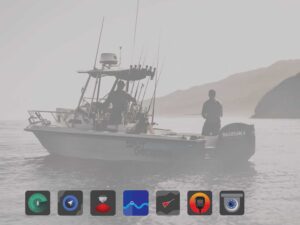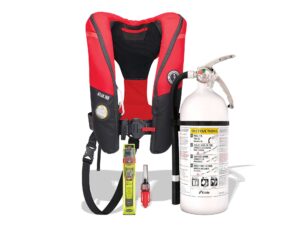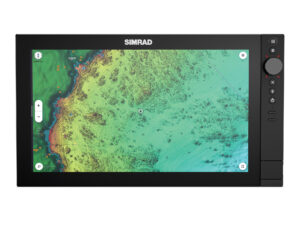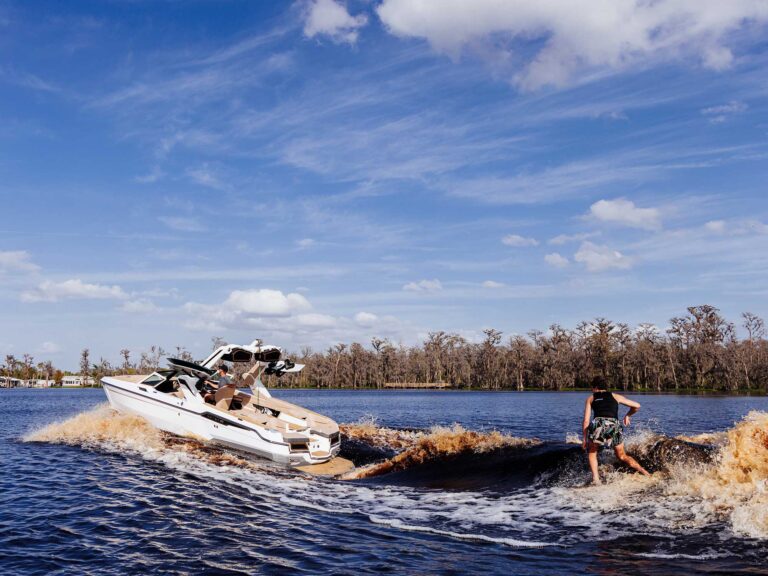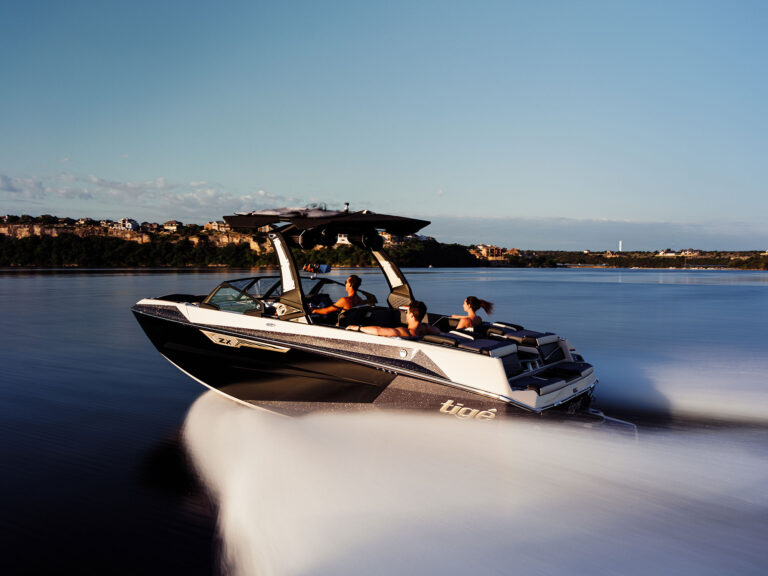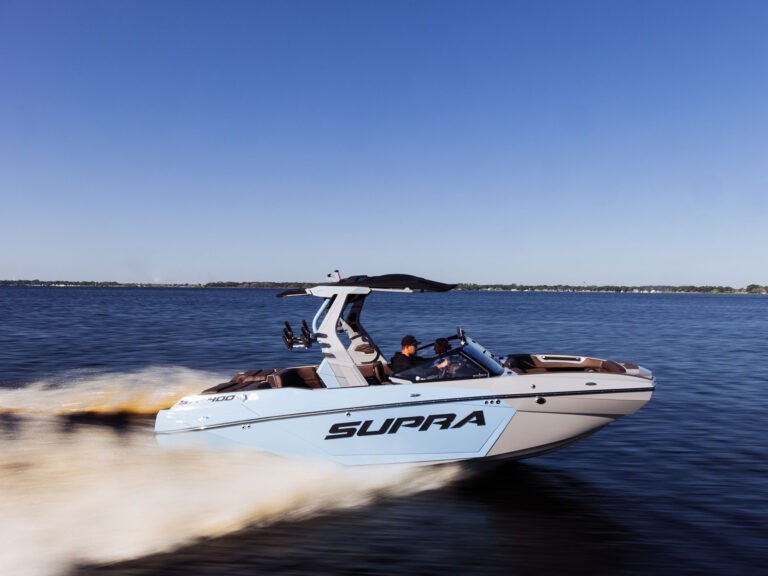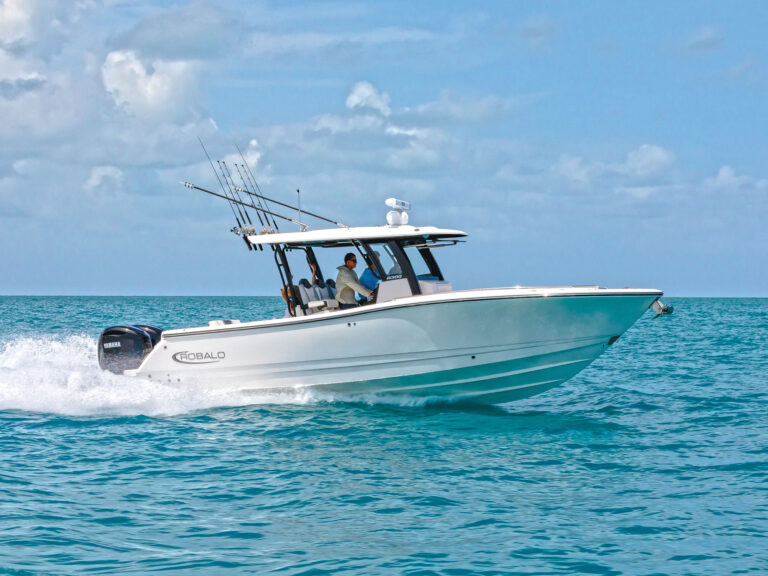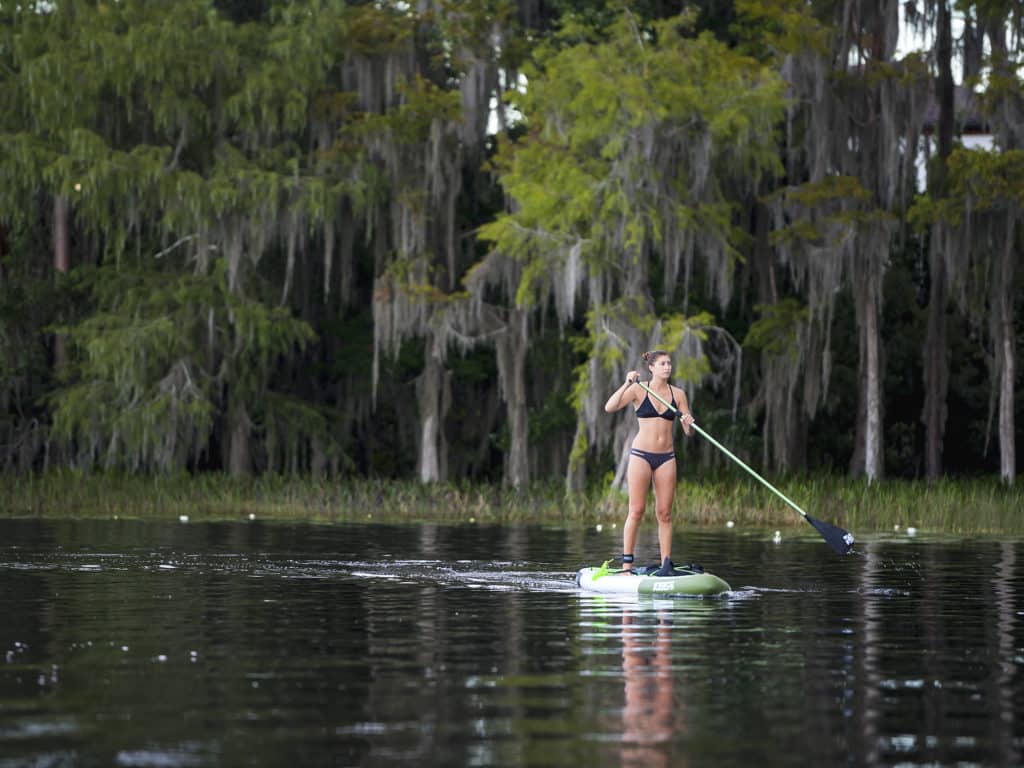
Think of stand-up paddleboards as the peaceful counterpoint to the adrenaline-pumping thrill of towed watersports. If you live on the water, paddleboards offer a great new way to explore your lake or river and stay fit on the water through paddling or yoga.
If you don’t live on the water, check out one of the new breed of inflatable paddleboards. These highly mobile alternatives make it easy to take your board on the road.
Need to Know
From surf- and yoga-specific designs to specialized racing boards, there are a wide variety of paddleboards to choose from.
All-Around Boards
Since towed-watersports enthusiasts tend to spend most of their time on lakes and rivers, all-around boards are a great place to start. Designed for flat-water conditions and multipurpose performance, these boards are typically longer and wider, with a high volume. As a result, they’re super stable and a good fit for beginner paddlers.
Inflatable Boards
If you live on the water, managing a big, bulky paddleboard isn’t that big of a problem. If you don’t, transporting your board can be a bit of a hassle. Enter inflatable boards. These lightweight boards can be pumped up in a few minutes and collapse to a compact size that can be transported in a bag or backpack. Inflatables can be designed for a range of environments, but their easy mobility is a universal plus.
Yoga Boards
These wider, longer boards allow yoga enthusiasts and water lovers to combine their passions. Yoga boards typically sport soft tops to keep you comfortable while contorting your body and feature cargo areas to store exercise accessories.
Anatomy Lesson
Length
The longer your board is, the faster it will travel. The shorter your board is, the easier it is to turn and maneuver.
Width
The wider your board, the stabler it will be, but that additional width will make it harder to turn and maneuver.
Thickness
Thickness also affects stability. The thicker your board, the stabler it will be. Beginners and tall, heavy riders should look for a thicker board.
Volume
Wider, longer and thicker board designs will feature more volume, while shorter, narrower boards will have less. More volume translates to more stability, so it’s a good idea for beginners to get started with a long, wide and thick board. While you gain stability with bigger boards, you’re likely giving up responsiveness and maneuverability, so as you get more experience paddling, you might want to downsize to a smaller, nimbler design.
Hull Shape
There are two basic types of paddleboard hulls: planing hulls and displacement hulls. Similar to surfboards, planing hulls are flat and wide and designed to ride on top of the water. As a result, planing hulls are the best shape for beginners and for riding surf waves. Designed with pointed noses, displacement hulls slice through the water for improved efficiency. They’re typically longer and narrower than planing-hull boards, which makes them a good fit for racing or long- distance paddling.
Fins
The vast majority of paddleboards have a single removable fin, though some surf designs have a three-fin setup for added drive and stability on waves.

